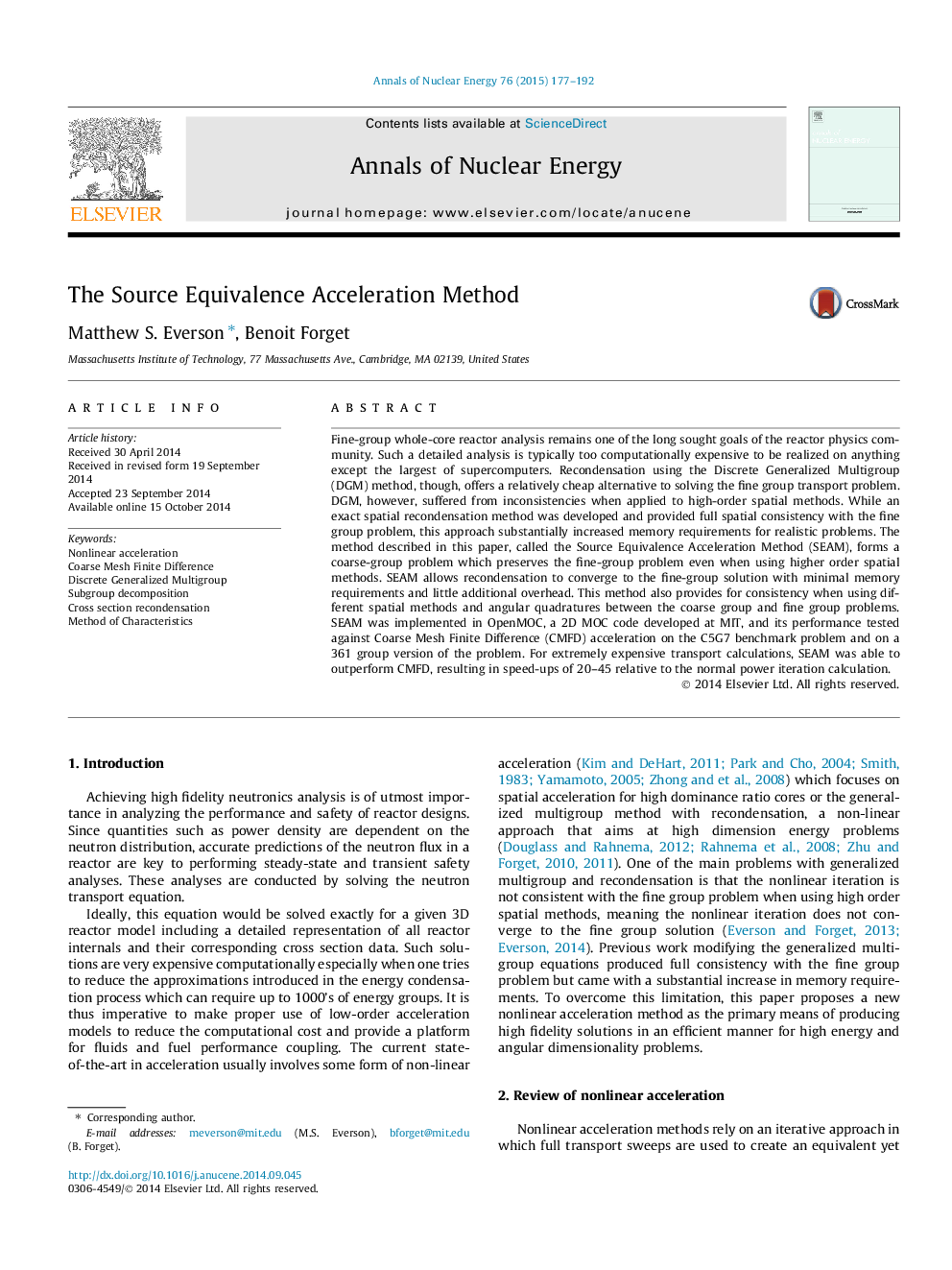| کد مقاله | کد نشریه | سال انتشار | مقاله انگلیسی | نسخه تمام متن |
|---|---|---|---|---|
| 1728184 | 1521122 | 2015 | 16 صفحه PDF | دانلود رایگان |
• We present a new acceleration method, the Source Equivalence Acceleration Method.
• SEAM forms an equivalent coarse group problem for any spatial method.
• Equivalence is also formed across different spatial methods and angular quadratures.
• Testing is conducted using OpenMOC and performance is compared with CMFD.
• Results show that SEAM is preferable for very expensive transport calculations.
Fine-group whole-core reactor analysis remains one of the long sought goals of the reactor physics community. Such a detailed analysis is typically too computationally expensive to be realized on anything except the largest of supercomputers. Recondensation using the Discrete Generalized Multigroup (DGM) method, though, offers a relatively cheap alternative to solving the fine group transport problem. DGM, however, suffered from inconsistencies when applied to high-order spatial methods. While an exact spatial recondensation method was developed and provided full spatial consistency with the fine group problem, this approach substantially increased memory requirements for realistic problems. The method described in this paper, called the Source Equivalence Acceleration Method (SEAM), forms a coarse-group problem which preserves the fine-group problem even when using higher order spatial methods. SEAM allows recondensation to converge to the fine-group solution with minimal memory requirements and little additional overhead. This method also provides for consistency when using different spatial methods and angular quadratures between the coarse group and fine group problems. SEAM was implemented in OpenMOC, a 2D MOC code developed at MIT, and its performance tested against Coarse Mesh Finite Difference (CMFD) acceleration on the C5G7 benchmark problem and on a 361 group version of the problem. For extremely expensive transport calculations, SEAM was able to outperform CMFD, resulting in speed-ups of 20–45 relative to the normal power iteration calculation.
Journal: Annals of Nuclear Energy - Volume 76, February 2015, Pages 177–192
